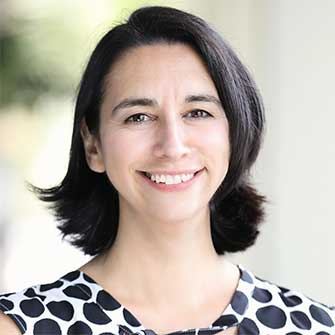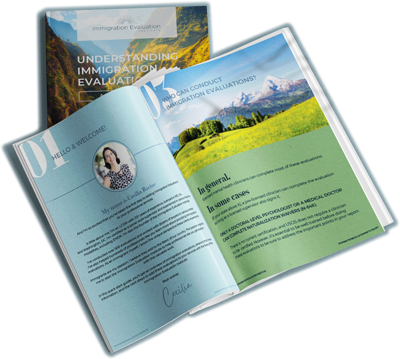What do you want to learn more about?
International Women’s Day: 4 Female Migrants Changing the World

International Women’s Day takes place on the 8th of March annually. It’s a day celebrating women’s social, economic, cultural, and political achievements. The day also marks a call to action for accelerating women’s equality.
The first International Women’s Day gathering occurred in 1911, supported by over a million people. Today, International Women’s Day is not a specific group or organization; it’s a collective movement enacted globally.
This Year’s Theme: #BreaktheBias
Celebrating women and raising awareness for social, economic, and political achievements is wonderful – but the day also highlights the divides that still exist across our communities.
This year’s theme is #BreaktheBias, with the campaign asking – how will you help to break bias against women?
Whether deliberate or unconscious, bias makes it difficult for women to move ahead. Knowing that bias exists isn’t enough. Action is needed to level the playing field.
Migrant women are still one of the most vulnerable groups globally, often heavily stereotyped and incredibly invisible. Yet research shows migrant women are not only highly-skilled, they’re also an invaluable asset worldwide.
4 Female Migrants Changing the World
There are many wonderful and inspiring stories of how migrants, particularly women, have changed and continue to change the world. Below are four worth knowing about:
Malala Yousafzai Malik, Activist for Women’s Education
Malala Yousafzai, often referred to as Malala and by her married name, Malala Yousafzai Malik, is a Pakistani activist for female education and a Nobel Peace Prize laureate. She is the world’s youngest Nobel Prize laureate and the second Pakistani ever to receive a Nobel Prize.
Malala has been outspoken about women’s rights, particularly education, since a young age. In 2012, she was shot in the side of the head. She woke up ten days later in Birmingham, UK, and has continued to be a powerful advocate for women’s right to education everywhere. She completed her education in the UK, where she still lives.
Madeleine Albright, First Woman to Serve as Secretary of State
Madeleine Albright arrived in the United States with her family after fleeing the 1948 Czechoslovak coup d’état and was welcomed by the community in Denver. “We came to the United States with nothing,” Madeleine Albright remembers, “People were so incredibly nice, and provided us with furniture and Christmas presents.”
After settling in the US, Albright went on to become the first woman to serve as secretary of state between 1997 and 2001, serving under President Bill Clinton.
Yusra Mardini OLY, Olympic Athlete & Activist
Yusra Mardini OLY is a Syrian swimmer currently living in Hamburg, Germany. She was a member of the Refugee Olympic Athletes Team which competed under the Olympic flag at the 2016 Summer Olympics in Rio de Janeiro.
The story of Mardini’s 25-day long voyage as a refugee captured headlines around the world after she, her sister, and other refugees managed to swim a dinghy carrying around 20 other refugees to safety.
Mardini was appointed a UNHCR Goodwill Ambassador in 2017.
San May Khine, Migrant & Project Officer at MAP Foundation
San May Khine, once a migrant worker herself, is now supporting other women migrant workers to move past trauma experiences and build a stable future for themselves.
Born and raised in Myanmar, Khine became a domestic worker in Thailand at the age of 14. She is now a social worker and project officer for MAP foundation, a non-governmental organization that empowers migrant communities from Burma living and working in Thailand. She works with migrant women and families who have experienced violence and trafficking.
How Will You Help to #BreaktheBias?
I already know that you wouldn’t be working in immigration evaluations if you didn’t believe in the vital role migrants play across our communities worldwide. I’m pretty confident you hold positive biases about immigration and migrants, and that’s what makes you good at what you do.
But negative bias surrounding migrants is still deeply entrenched in many areas of society. This International Women’s Day offers us all a chance to spread good stories, like those of the women above, to help #BreaktheBias.
These stories can help not only us but our clients too. Positive success stories like these show our clients that anything is possible. Here are a few ways to spread the message:
- Share the stories on social media: I’ve included links to more details about the four women mentioned above – you could share these across social media with the hashtags #IWD2022 and #BreaktheBias to spread the inspiration.
- Create an International Women’s Day ‘Inspiration’ Board in your workplace: If you have space, you could create a visual board in your workplace to showcase these stories – and others like it – perhaps asking colleagues and clients to add post-it notes about their own journeys and successes.
- Talk to your clients about their stories: We are all busy, but sometimes taking the time to learn about clients’ journeys, skills, life experiences, and passions can be revelationary. If you can, find the time to chat and learn more.
- Write a blog post about your work: Another great way to #BreaktheBias is to write a blog post for your company website or personal blog about your experiences working with female migrants, their successes, skills, and highlight the ways they are often relegated to the margins of society unfairly.
- Donate to a good cause: Another great way to show support and fund vital work is by donating to a good cause if you have the financial capacity. The UN Refugees website has some great ways to donate, but you could also search for local groups in your state or community.
Above all else, take a moment to reflect and think about the work you do with migrants in your community. Know you are making a difference in someone’s life, and that difference can ricochet outwards, creating ripples of change across other lives.
I know your clients appreciate your work – and I do too.

I’m Cecilia Racine, and I teach therapists how to help immigrants through my online courses. As a bilingual immigrant myself, I know the unique perspective that these clients are experiencing. I’ve conducted over 500 evaluations and work with dozens of lawyers in various states. Immigrants are my passion, I believe they add to the fabric of our country.
related articles
Building Rapport with Clients in Immigration Cases
Establishing a strong therapeutic alliance is critical and challenging for mental health clinicians working with…
Invisible Wounds: The Importance of Brain Injury Awareness in Psychological Evaluations for Immigration Cases
March marks National Brain Injury Awareness Month, an essential time for mental health clinicians to…
Budget-Friendly Tips for Professional-Looking Photos
As therapists dedicated to helping individuals through crucial immigration processes, presenting a professional image is…
Join the Free
Immigration evaluation
therapists facebook group
Are you a therapist that conducts immigration evaluations?



